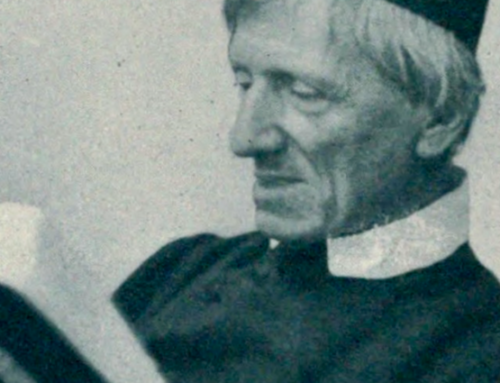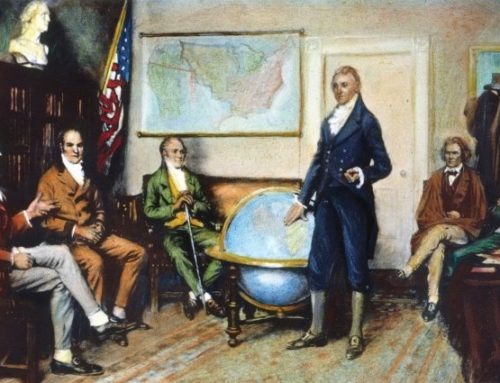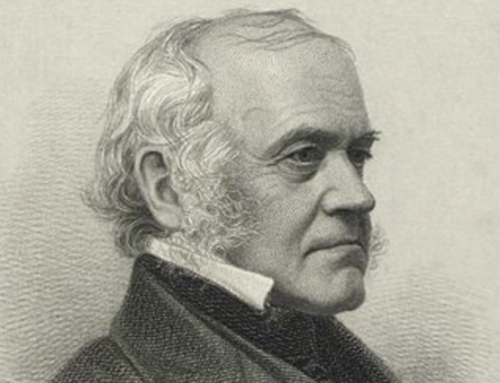Any attempt to mould Shakespeare into the image of what Evelyn Waugh called “our own deplorable epoch” is ridiculously absurd, and “queer theorists” who seek to do so should not be taken seriously as scholars or critics. If these critics were able to empathise with the past, they would see Shakespeare’s sonnets as they truly are: the inspired work of a Catholic genius.
 There is something truly rotten in the state of Shakespeare criticism. Take, for instance, All is True, a recent film, produced by Sony Pictures Classics, which shows Shakespeare as a homosexual. Such nonsense has its rotting roots in pride and prejudice, both of which need to be exposed so that we can clear Shakespeare’s name and so that we can clear the fogs of nonsense with which critics have smothered the goodness, truth, and beauty of his work. In order to do this, it is necessary to see Shakespeare in the context of the times in which he lived so that we can see his works as he and his audience would have seen them. This was what I set out to do in my books, The Quest for Shakespeare and Through Shakespeare’s Eyes. The trouble is that most modern critics see Shakespeare through agenda-driven eyes, subjecting the works to the spirit of their own age instead of subjecting themselves to the spirit of the age in which Shakespeare lived and worked. They subject Shakespeare to ideological fads and fashions, killing his works with Marxist, feminist, and deconstructionist criticism, and also with the homosexism of so-called “queer theory” which was the agenda driving the Sony Pictures film.
There is something truly rotten in the state of Shakespeare criticism. Take, for instance, All is True, a recent film, produced by Sony Pictures Classics, which shows Shakespeare as a homosexual. Such nonsense has its rotting roots in pride and prejudice, both of which need to be exposed so that we can clear Shakespeare’s name and so that we can clear the fogs of nonsense with which critics have smothered the goodness, truth, and beauty of his work. In order to do this, it is necessary to see Shakespeare in the context of the times in which he lived so that we can see his works as he and his audience would have seen them. This was what I set out to do in my books, The Quest for Shakespeare and Through Shakespeare’s Eyes. The trouble is that most modern critics see Shakespeare through agenda-driven eyes, subjecting the works to the spirit of their own age instead of subjecting themselves to the spirit of the age in which Shakespeare lived and worked. They subject Shakespeare to ideological fads and fashions, killing his works with Marxist, feminist, and deconstructionist criticism, and also with the homosexism of so-called “queer theory” which was the agenda driving the Sony Pictures film.
The problem with so-called “queer theory” is that it is an invention of the last fifty years. It never existed prior to its invention. This is not to say that homosexual practice did not exist, of course, though it would not and could not have been called “homosexual” in Shakespeare’s time because that word is itself an invention of the late nineteenth century, when it was employed to signify something pathological. The word “gay,” of course, is even newer, deriving from mid-twentieth-century homosexual underworld slang. The point is that Shakespeare would have been baffled at first and then horrified to discover that gutter-minded “academics,” employing the doubles-entendres of twentieth-century adolescent toilet humour, had inverted his meaning to signify sodomy, which would probably have been the only word he would have used to describe the practice of homosexuality.
This being said, let’s humour the “queer theorists” by looking at the evidence they present. Sonnet 20 seems to be the strongest evidence that they have to offer. It does talk of “love,” though love meant love to the Elizabethans, not fornication or copulation, and still less sodomy. The word “love” was not used as a mere innuendo, nor would Lennon’s understanding of love as something self-centred and lacking in self-sacrifice have been comprehensible to an Elizabethan. Of course, a cad might feign “love” for vicious purposes but that would make him a liar, not a lover. Since “love” meant “love,” it was often employed to describe a man’s feelings towards another man. Love meant love, as in caritas, something which every Christian is commanded to feel towards every other person, male or female.
To the extent that Shakespeare employs bawdiness in the sonnet, it is absolutely clear that the poet is not interested in the one thing in which homosexuals are obsessed. The “addition” of male genitalia to the person to whom the sonnet is addressed is the “adding [of] one thing to my purpose nothing,” i.e., the poet has no purpose for the additional appendage, which signifies that “Nature [had] prick’d thee out for women’s pleasure.” Shakespeare’s meaning is clear enough. Men are not interested in something that Nature has designed for women’s pleasure. If Sonnet 20 is the best that “queer theorists” can do, it is remarkable that allegedly respectable critics are convinced by it.
As for other sonnets, we see in Sonnet 23 a coded reference to the Mass as “the perfect ceremony of love’s rite”; Sonnet 73 laments the destruction of England’s monasteries (the “bare ruin’d choirs where late the sweet birds sang”); and Sonnet 129 is an unequivocal condemnation of “lust in action” as the “expense of spirit in a waste of shame.” This last sonnet should serve as Shakespeare’s own riposte to those “theorists” who are seeking to paint him in their own deplorable image.
We don’t need to believe that Shakespeare was a saint, but the evidence suggests that he was a good and God-fearing man. Take, for instance, the character portrait of the Poet given by William Beeston, who as the son of Christopher Beeston, an actor in Shakespeare’s company and no doubt his personal friend, is one of the most reliable sources of the real Shakespeare that we have. Beeston told the antiquary, John Aubrey, that Shakespeare was “the more to be admired, he was not a company keeper. [He]… wouldn’t be debauched, and if invited to, writ [i.e., wrote] he was in pain.”
This might make uncomfortable reading for the modern critic, but the fact is that the Elizabethans were very “politically incorrect” by today’s standards, and Shakespeare, as a religiously traditionalist Catholic (as has been proven beyond reasonable doubt), was more “politically incorrect” than most of his contemporaries. Any attempt to mould Shakespeare into the image of what Evelyn Waugh called “our own deplorable epoch” is ridiculously absurd and those seeking to do so should not be taken seriously as scholars or critics. If these critics were able to empathise with the past, even if they could not bring themselves to sympathise with it, they would see and understand the works of Shakespeare as Shakespeare himself saw them. They would see them as they truly are, as the inspired work of a Catholic genius. Were they able to see the works in this way, they would see, and understand, that the eroticism of the sonnets has more in common with the erotic symbolism of the Song of Songs than with any modern understanding of the erotic, and they would begin to see that the sonnets have more to do with the psalmody of David than with the sodomy of Gomorrah.
Republished with gracious permission from Crisis magazine.
The Imaginative Conservative applies the principle of appreciation to the discussion of culture and politics—we approach dialogue with magnanimity rather than with mere civility. Will you help us remain a refreshing oasis in the increasingly contentious arena of modern discourse? Please consider donating now.
The featured image is an image of a statue of William Shakespeare on “Literary Walk” in Central Park, Manhattan, NYC, taken by Ahodges7, and has been released into the public domain. It appears here courtesy of Wikimedia Commons.







Brilliant, as always, Mr. Pearce!
One must appreciate the ruminations of a person who unconsciously, or perhaps better stated as “spiritually”, knows that their actions or thoughts or beliefs are wrong, or better stated “sinful”. To absolve themselves, they desperately seek justification, normalization, and sometimes eve sanctification. We are all guilty of this to one extent or another.
Sadly, the incongruity leads one down the path of insanity, seeking more and more extreme rationalization in an attempt to make sense of it all. What an entire society begins to fallow that path, it reaches a point where that sin spins out of control. There can be no sense made of it. Most in such a society cannot see it because they are a part of it.
Our only hope is examined ourselves critically for our own faults, constantly being on guard for our own self deceptions, and to find that center of comfort and grace where we are in harmony with our God.
In our USA of today, too many of us find ourselves in denial of what we have become, that the freedoms we have taken for granted are being torn away, and that the most innocent and good are likely to suffer terrifically.
But what comes next is where we must strive to keep our Faith, Hope and Charity. It will take strength and perseverance. Writers like you, Mr. Pearce, among many others here on TIC are constantly pointing us toward light and clarity. I thank you for sharing your Light!
Thank you for being a voice of scholarship and reason in such a time as this. Shakespeare’s works are a treasure. What a shame and shamble that his work is being perverted.
Thank you! Anybody with common sense can see the emptiness of mainstream literary scholarship right now. They would, of course, retort that they don’t care what Shakespeare intended because authorial intention is irrelevant – that he may have unconscious, hidden drives revealed in his text. These are people who hate literature. And they are teaching our children.
Shakespeare is not the only target of the obsessed pederasts who believe everyone is, deep inside, really a homosexual. Napoleon, Lincoln, and others have been targeted. All of them, so they cannot defend themselves, much less bash in the head of their accusers.
‘
We don’t need to believe that Shakespeare was a saint, ‘ but we should believe, and better yet know, that he was a Sage for all time!
Not to mention some actual saints, such as the Cistercian, Saint Aelred of Riveaux, the subject of an identical slanderous trend among some contemporary scholars.
I can highly recommend a book called A Year in the Life of William Shakespeare – 1599, by James Shapiro. It looks at all the events of that watershed year in London in light of influence upon him. For starters, having to fight for and build your own theatre tends to ground a writer in reality and people.